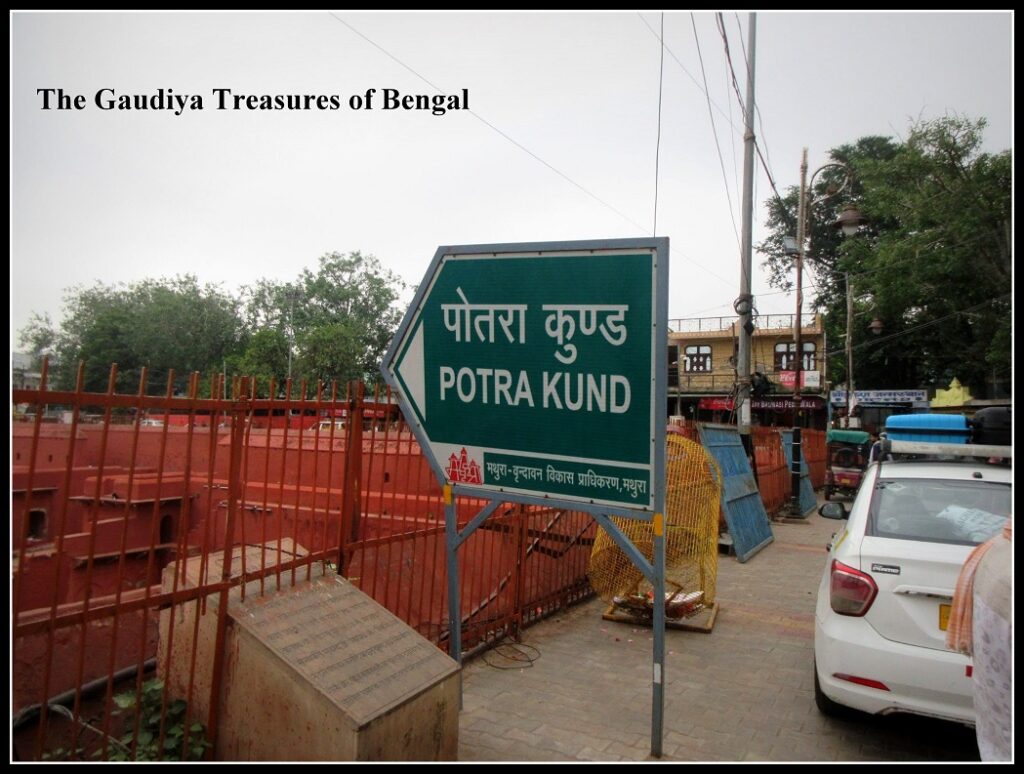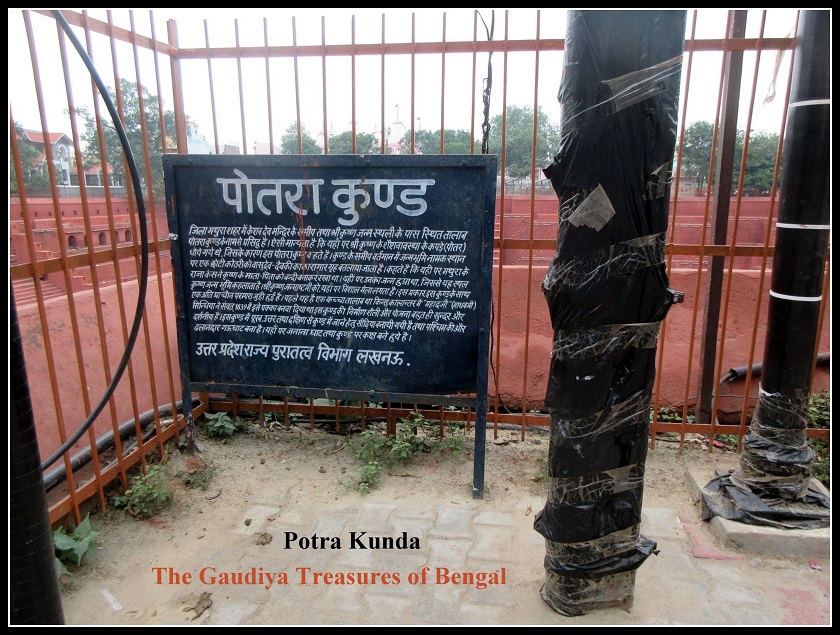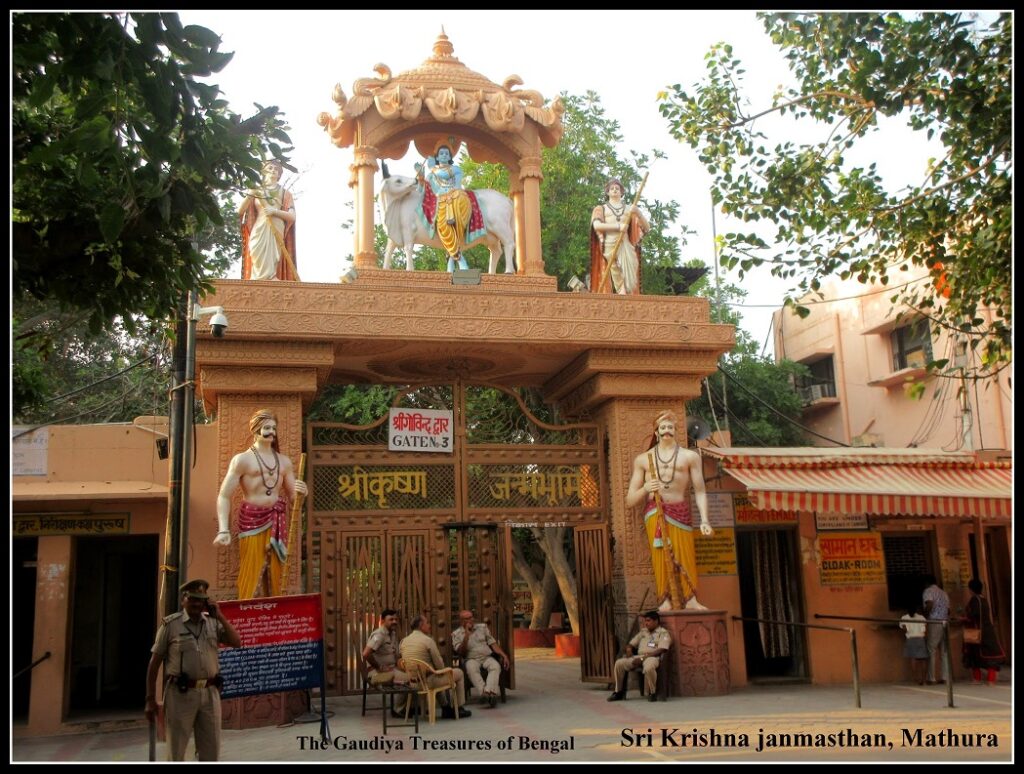
About 5 Kilometers south of Maholi (Madhuvan) and 10 Kilometers south of Mathura, is situated the village of Tarsi, whose ancient name was Talavan. Over here are worshiped beautiful deities of Lord Balarama (Dauji) and Revati devi. Next to the temple lies ‘Balabhadra Kunda’, which is also sometimes referred to as ‘Sankarshana Kunda’. It was over here in the forest of Talavan that Lord Balarama had killed demon Dhenukasura and his ass-demon associates. The place was previously filled with tall ‘Tala’ trees (palm trees) during Dvapara yuga and the region had thus derived its name. Presently Tarsi is not a forest anymore, and only a few Tala trees remain scattered here and there. Some of these Tala trees can be found today within the precincts of the temple compound. Talavan has been widely glorified throughout the Vedic scriptures. Skanda Purana states –
Aho tala vanam punyam yatra talair hato surah
Hitaya yadavanam ca atma kridanakaya ca
–
Ah, the forest of Talavan is highly auspicious. It is here that a demon (Dhenukasura) was killed by being thrown on a Tala tree for the benefit of the yadavas and for the purpose of the Lord’s play.
The forest of Talavan has been described in Sri Hari Vamsa as follows –
sa tu desah samah snigdhah
su mahan Krishna mrittikah
darbha prayah sthuli bhuto
lostra pasana varjitah
–
The land there (in Talavan) is smooth, and very wide. The ground is black, densely covered with darbha grass, and devoid of rocks and stones.






